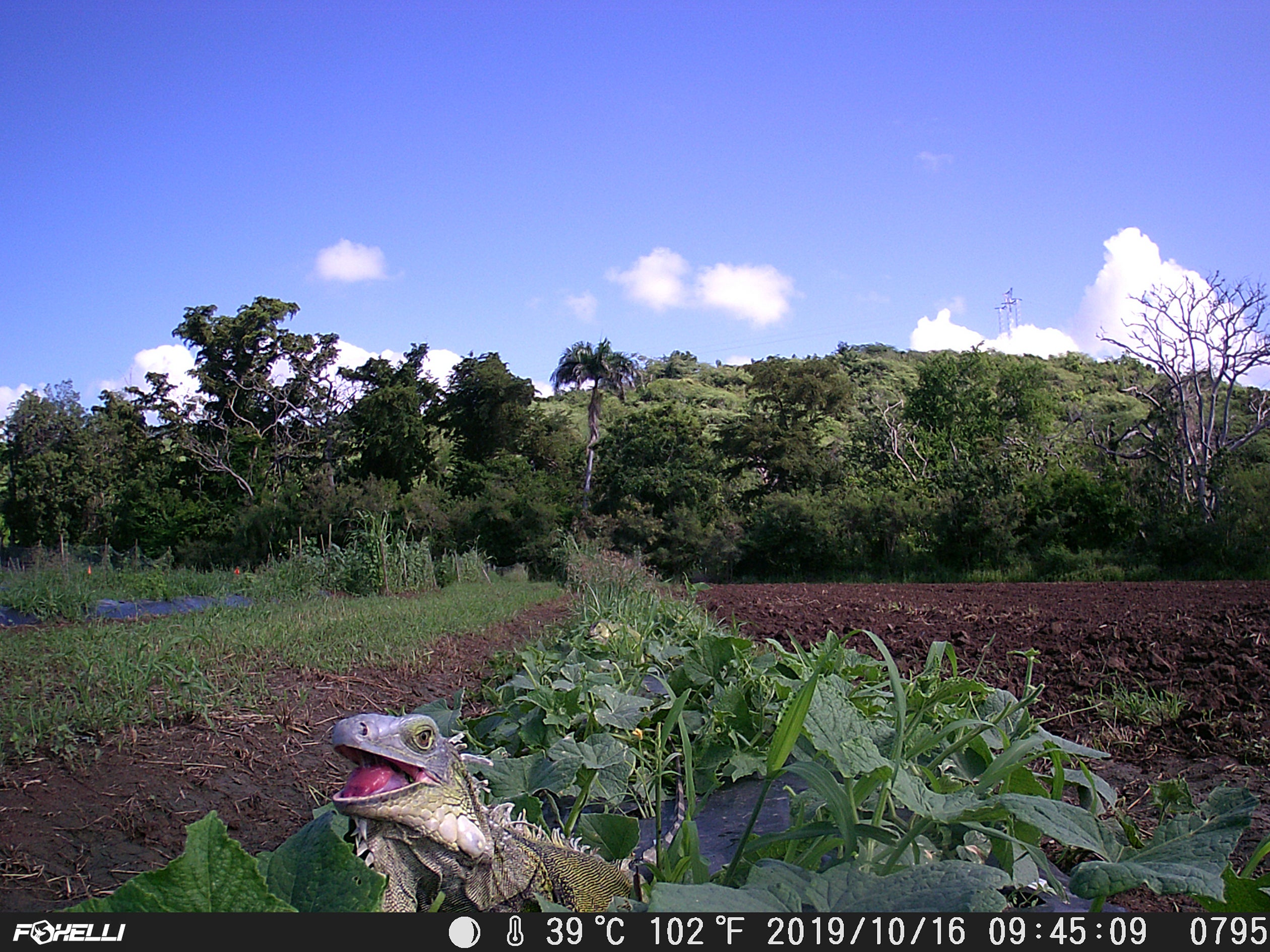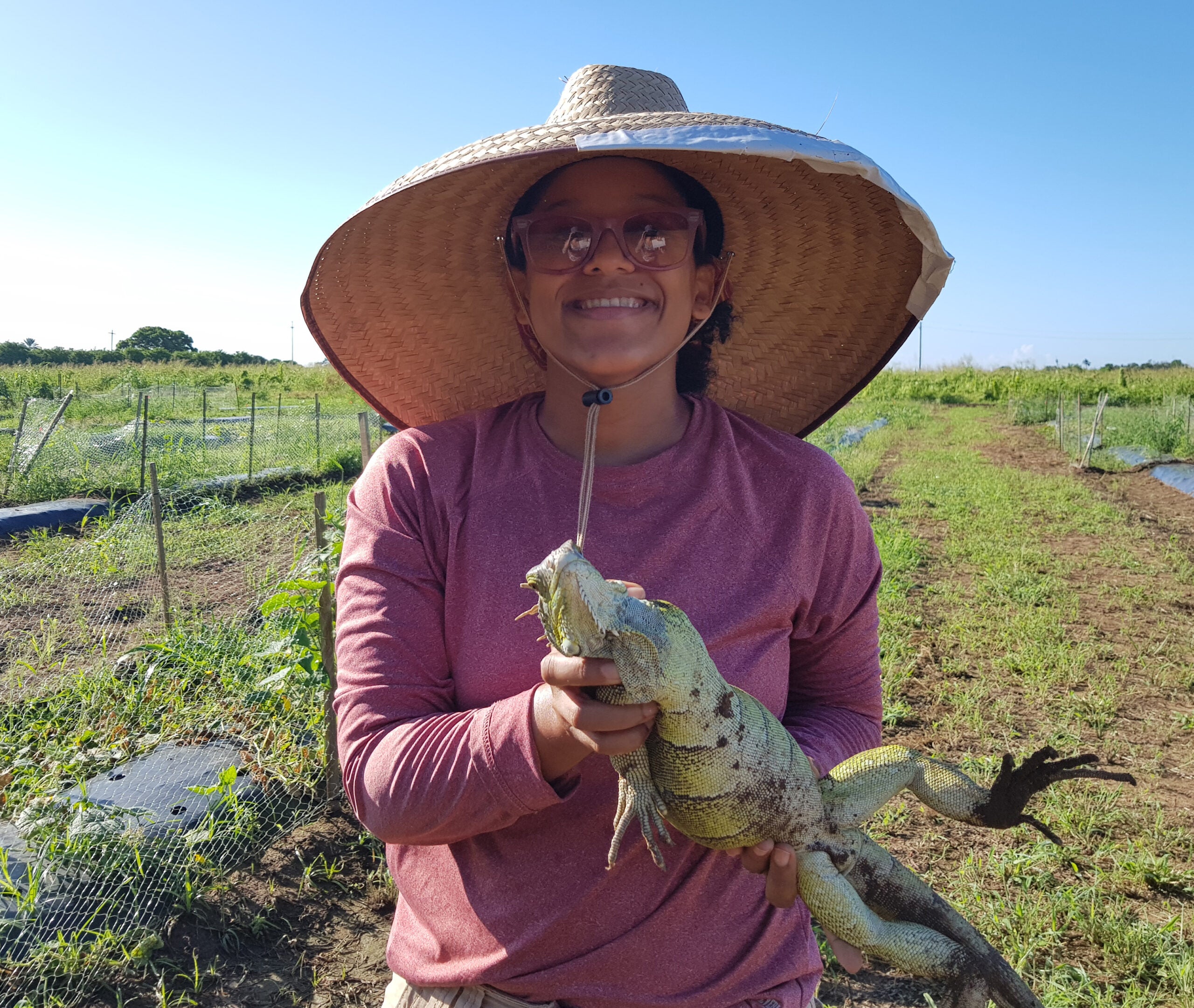KINGSTON, R.I. – October 21, 2020 – Invasive green iguanas have become widespread on many islands in the Caribbean, and farmers have complained that the lizards are eating their crops. To determine the extent of the problem in Puerto Rico, University of Rhode Island doctoral student Christina De Jesús Villanueva is undertaking an interdisciplinary study of the lizards and their impact on farming in the U.S. territory.
“Green iguanas have been in Puerto Rico since at least the 1960s, but their population grew in the 1990s and 2000s, and that got some attention from government agencies,” said De Jesús Villanueva, who lives in Puerto Rico and studies biological and environmental sciences at URI. “It has the potential for being a big problem for agriculture, but nothing is being done about it. So I’m trying to understand the relationship farmers have with the iguanas.”
De Jesús Villanueva, who was recently awarded a Switzer Fellowship, spent most of 2019 interviewing farmers, growing crops in test plots, testing methods of keeping iguanas away from crops, and studying the ecology of the lizards, which are native to Central America but have spread widely through the pet trade.

“I think the iguanas are fascinating because they arrive in new places and find ways to thrive,” she said. “But if I were a farmer trying to grow a hectare of papayas and iguanas ate it, I’d be very angry and probably wouldn’t like them.”
The animals are good climbers and spend most of their time living in the crown of trees. They seldom descend to the ground except to nest and to feed on crops.
About half of the farmers De Jesús Villanueva interviewed expressed negative feelings toward the lizards, though many of those who did not have negative feelings had found a way to combat the iguanas or did not have iguanas living nearby.
She learned that green iguanas eat about 20 different crops grown in Puerto Rico, especially squash, papaya, watermelon, lettuce, beans, tomatoes, cucumbers and passionfruit. She also discovered that two of the three management methods that farmers use to try to keep iguanas from their crops – spreading netting over their fields and spraying their crops with an oil-based pesticide – were not particularly effective.
“Fencing the iguanas out was the only method that significantly increased crop yields,” she said. “On a large scale, it could save them a lot of money.”
Although she is still analyzing her data, De Jesús Villanueva plans to develop Puerto Rico’s first assessment of the economic impact that green iguanas are having on agriculture. She will also disseminate information to agriculture extension offices about the crops the iguanas are most likely to eat and the results of her tests of iguana management techniques.
“It will be useful information that the farmers can use for planning,” she said. “They can use it to decide whether to grow a particular crop or use a particular management method.”
Ultimately, she hopes her research will provide a boost to the nation’s farmers, for whom she has developed a great appreciation.
“Farmers have been talking about this issue for years, but it’s not getting any attention,” she said. “Food security is more important on an island like Puerto Rico, especially with the hurricanes we’ve seen lately. Food is the base of everything, it connects us all, so this sector needs some attention.”

